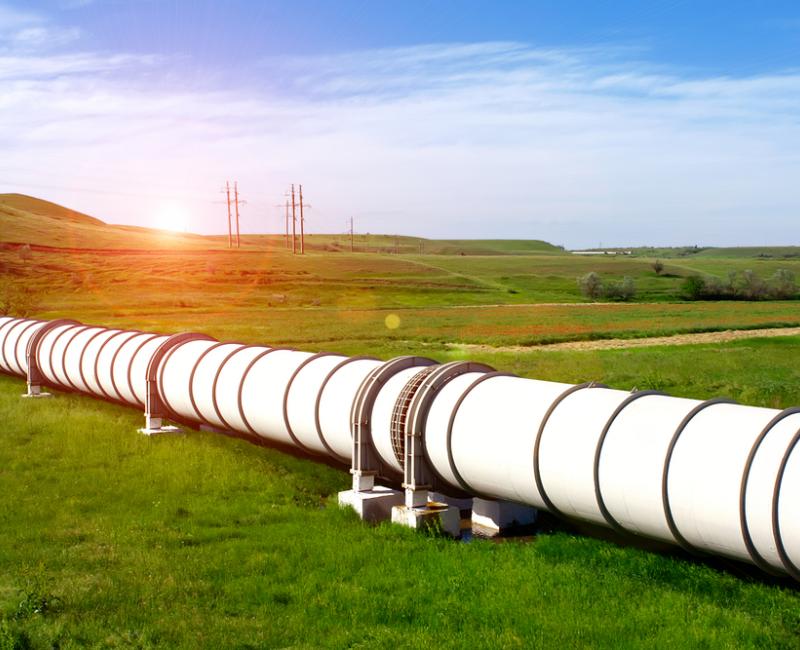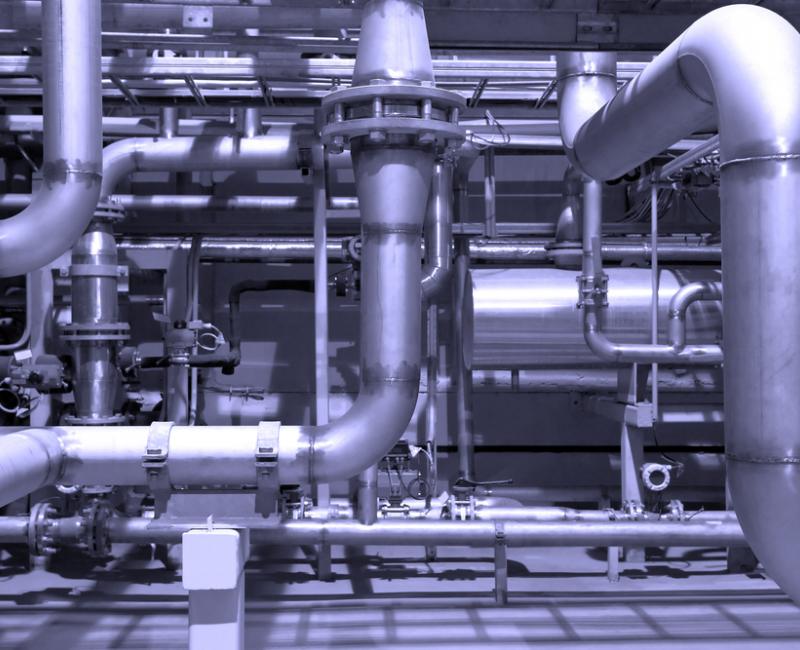2 Algorithms
2 Algorithms
Documentation on the approval process of this methodology
2 Algorithms - Approved
2 Algorithms - Approved
Latest approved algorithm methodology
ACER will adopt new framework guidelines on scenarios for network development planning

ACER will adopt new framework guidelines on scenarios for network development planning
What is it about?
The EU Agency for the Cooperation of Energy Regulators (ACER) has initiated the procedure to adopt new framework guidelines on scenarios regulating future network development planning, in accordance with the recast TEN-E regulation.
What is it about?
Every two years, the European Network of Transmission System Operators for Electricity (ENTSO-E) and for Gas (ENTSOG) prepare joint scenarios which set the basis for the future network development planning in the European Union.
Scenarios include a set of assumptions about energy demand and supply evolutions which aim at supporting the biennial Union-wide ten-year network development plans (TYNDPs). These TYNDP processes feed into the identification and selection of projects of common interest, which play an important role in making the infrastructure ready to achieve the energy and climate policy objectives.
As such, enhanced scrutiny on the process of developing scenarios leads to increased trust from stakeholders and citizens.
What is the role of ACER?
The recasted TEN-E regulation stipulates a more structured process for developing the joint TYNDP scenarios. It requires from ACER to prepare Framework Guidelines which should ensure the TYNDP scenarios are transparent, non-discriminatory and robust, as well as in line with the Union’s climate and energy objectives (e.g. fostering Union’s 2030 energy and climate targets, as well as its 2050 climate neutrality objective). These scenarios should also build on the European Commission’s Fit for 55’ scenarios, as well as on the national energy and climate plans.
The ENTSO-E and ENTSOG shall follow the Agency’s framework guidelines when they construct the joint TYNDP scenarios.
What’s the way forward?
In order to inform its decision-making process in an inclusive and extensive manner, ACER will collect views from interested stakeholders.
Starting from July 2022, and on a regular basis, ACER will organise a series of technical workshops, involving the ENTSOs, stakeholders and scenarios’ experts.
In order to be invited to the technical workshops, stakeholders should raise their interest and share their initial views by writing at scenario.guidelines(at)acer.europa.eu by 25 July 2022.
| 19 July 2022 | Introductory workshop on main issues in scenario development |
|---|---|
| ACER slides | |
| ACER workshop notes | |
| 26 July 2022 | Ensuring an inclusive stakeholder process |
| ACER slides | |
| ACER workshop notes | |
| Stakeholder presentations and views | |
| 29 July 2022 | Transparency of scenarios (inputs, models, assumptions, outputs) |
| ACER slides | |
| ACER workshop notes | |
| Stakeholder presentations and views | |
| 2 August 2022 | Scenario(s) and their alignment with NECPs, Fit for 55, REpowerEU |
| ACER slides | |
| ACER workshop notes | |
| Stakeholder presentations and views | |
| 5 August 2022 | How to consider efficiency, demand-side, hydrogen and other technologies in scenarios |
| ACER slides | |
| ACER workshop notes | |
| Stakeholder presentations and views | |
| List of participating organisations |
A broader public consultation was held from 6 October until 14 November 2022; see the responses to the public consultation.
The new framework guidelines will be adopted in January 2023.
For more procedural information, access the Public Notice.
ACER will organise a webinar on 26 January 2023 to explain the Framework Guidelines.
Access more information on the ENTSOs’ most recent completed scenario development process.
ACER to decide on the methodology for optimising the inter-TSO settlements for electricity redispatching and countertrading

ACER to decide on the methodology for optimising the inter-TSO settlements for electricity redispatching and countertrading
What is it about?
On 1 July 2022, the European Network of Transmission System Operators for Electricity (ENTSO-E) submitted to the EU Agency for the Cooperation of Energy Regulators (ACER) the proposal for a new methodology optimising the inter-transmission system operators (TSOs) settlements related to redispatching and countertrading.
The proposal was issued by all TSOs, in accordance with the Electricity Regulation.
In particular, the Electricity Regulation provides for the establishment of Regional Coordination Centres (RCCs) and mandates RCCs to support TSOs in their request for optimising the inter-TSO settlements, including administering the financial flows (related to redispatching and countertrading) between TSOs.
What are the benefits?
Common processing and optimisation of inter-TSO settlements contributes to reduce costs and improves clarity on the settlement procedure, for the benefit of stakeholders.
What are the next steps?
According to the Electricity Regulation (Article 37(5)), ACER shall reach a decision within three months from the receipt of the proposal.
ACER has initiated the procedure, and will reach a decision by 1 October 2022.
ACER invites interested stakeholders to submit their views by 10 August 2022 to the email: ACER-ELE-2022-013(at)acer.europa.eu.
The Spanish energy regulator (CNMC) fines GASELA GMBH and SOLSTAR Limited €6 million each for manipulating the Spanish gas market

The Spanish energy regulator (CNMC) fines GASELA GMBH and SOLSTAR Limited €6 million each for manipulating the Spanish gas market
What is it about?
On 23 June 2022, CNMC adopted a sanction decision imposing fines of:
-
€6 million on GASELA GMBH (GASELA)
-
€6 million on SOLSTAR Limited (SOLSTAR)
for manipulating the Spanish wholesale gas market in breach of Article 5 of the Regulation on Wholesale Energy Market Integrity and Transparency (REMIT).
CNMC found that, especially between 15 and 21 April 2019, GASELA and SOLSTAR carried out pre-arranged transactions on the Spanish wholesale gas market (MIBGAS) aimed at keeping prices at an artificially higher level than what would have resulted from the oversupply caused by GASELA during Easter week (which is typically characterised by lower demand and liquidity).
GASELA and SOLSTAR issued pre-arranged orders and performed transactions in the within-day, daily, and weekend gas products to keep prices high. They also colluded to prevent other market participants from benefiting from the abnormally high prices.
Hence, according to CNMC, their actions breached Article 5 of REMIT by:
-
sending misleading signals on the supply, demand, and price of the gas wholesale products and
-
setting the prices of such gas wholesale products at an artificial level.
Access CNMC’s decisions (in Spanish).
The decision can be subject to an appeal.
ACER Guidance
ACER provides guidance to National Regulatory Authorities (NRAs) on implementation of the REMIT regulation.
In 2021, ACER updated its Guidance on REMIT (6th Edition) to anticipate upcoming NRA decisions on market manipulation such as sending false/misleading signals and setting prices at an artificial level, including new examples on collusive behaviours between market participants and on pre-arranged trades.
ACER welcomes CNMC’s decision under REMIT.
ACER and ENTSOG consult on the FUNC issue: how to ensure greater flexibility to book firm capacity at interconnection points

ACER and ENTSOG consult on the FUNC issue: how to ensure greater flexibility to book firm capacity at interconnection points
What is it about?
The EU Agency for the Cooperation of Energy Regulators (ACER) and the European Network of Transmission System Operators for Gas (ENTSOG) have discussed how to ensure greater flexibility to book firm capacity at interconnection points in an online workshop held on 27 June 2022. The discussion is also known as FUNC issue (ID 01/2020).
What is the FUNC issue?
The FUNC issue was reported by the European Federation of Energy Traders (EFET) who has proposed to make firm IP capacity more readily available to shippers by enabling Transmission System Operators (TSOs) to offer it for sale in uniform price allocation (UPA) auctions (outside the auction timetable dates envisaged by the Network Code on Capacity Allocation Mechanisms).
What’s the way forward?
Several solutions to enable a more flexible capacity allocation process, as well as the urgency of facilitating this process, were debated at the workshop. To learn more, access the recording and the slides presented at the event.
To further inform its decision-making process, ACER and ENTSOG are now opening a public consultation to continue the collection of more detailed inputs from stakeholders, particularly in relation to:
-
how to optimise capacity allocation and
-
how to assess and prioritise the proposals presented in the workshop, as well as their urgency.
Special attention is paid to the current and fast evolving conditions in the EU gas markets and how a change in capacity allocation would benefit the markets.
Update as of 4 August 2022: The deadline to provide input has been extended until 18 August 2022.
The inputs gathered during the workshop and the public consultation will be key for ACER and ENTSOG to prepare a solution note, closing the FUNC case.
The French energy regulator (CRE) fines Engie SA €80,000 for insider trading

The French energy regulator (CRE) fines Engie SA €80,000 for insider trading
What is it about?
On 25 June 2022, the Dispute Settlement and Sanctions Committee (CoRDiS) of the French energy regulatory authority (CRE) published a sanction decision adopted on May 19, 2022 imposing a fine of €80,000 on Engie SA (Engie), for breaching the prohibition of insider trading under Article 3 of REMIT, the EU Regulation on Wholesale Energy Market Integrity and Transparency.
Under REMIT, using inside information by acquiring/disposing of wholesale energy products to which that information relates, or disclosing inside information to any other person (unless such disclosure is part of the normal exercise of their employment, profession or duties) is prohibited as insider trading.
In the present case, CoRDiS found that on 23 January 2017, in the context of unavailability of two of Engie’s gas fired power plants:
- a member of Engie’s Dispatch team communicated to a member of the Trading Team inside information on the extension of unavailability of the Combigolfe power plant, before disclosure of the inside information to the market (breach of Article 3(1)(b) of REMIT);
- the Trading team used the inside information to enter into five transactions on two hourly products on EPEX SPOT’s French intraday market (breach of Article 3(1)(a) of REMIT).
CoRDiS noted the weakness of Engie’s internal procedures at the time of the event, based exclusively on oral exchanges between the officials of Engie’s Dispatch and Trading teams and aiming at preventing the dissemination of inside information, which could not prevent the occurrence of the infringement.
Access CoRDiS’ decision (in French).
The sanction decision can be subject to an appeal to the French Conseil d’Etat.
ACER Guidance
ACER provides guidance to national regulatory authorities (NRAs) on the application of the REMIT regulation.
In 2021, ACER updated its Guidance on REMIT (6th Edition) to anticipate upcoming decisions from NRAs on insider trading. The updated Guidance included a specific chapter on the prohibition of insider trading (Chapter 5).
ACER welcomes this decision against insider trading under REMIT. It is the third REMIT decision by the French regulator in two months, the other ones imposed on EDF and EDFT.
